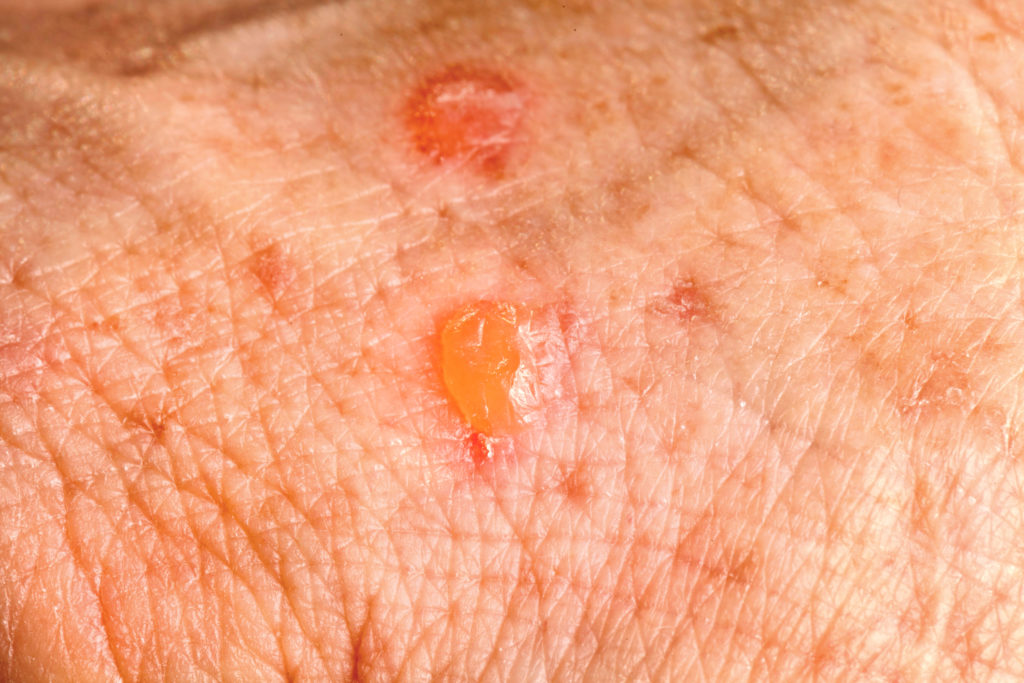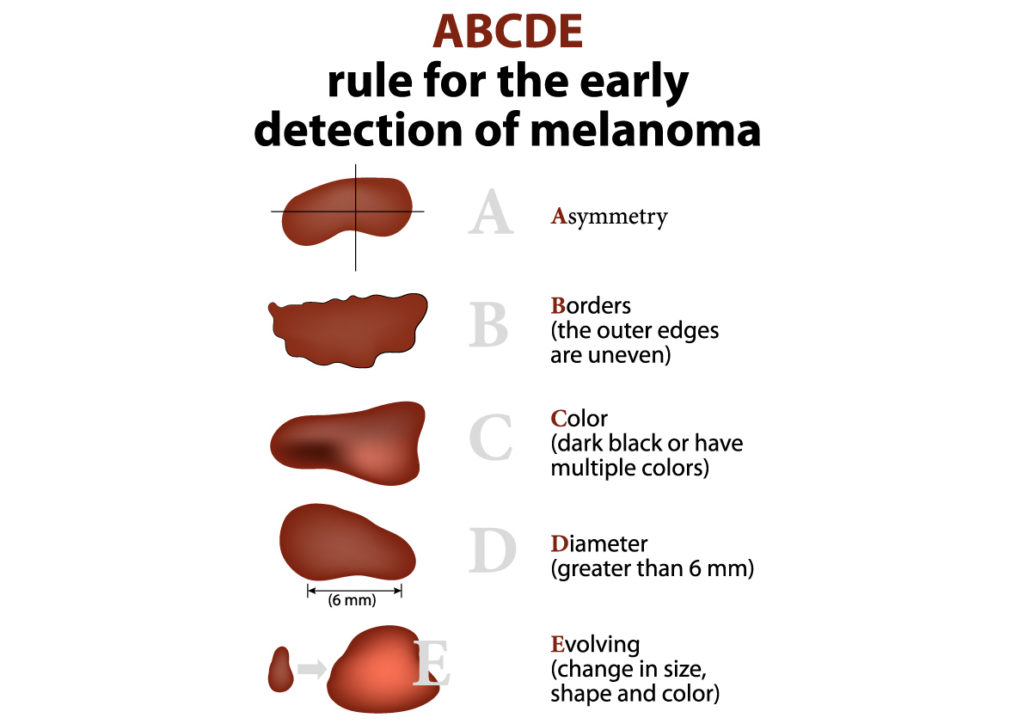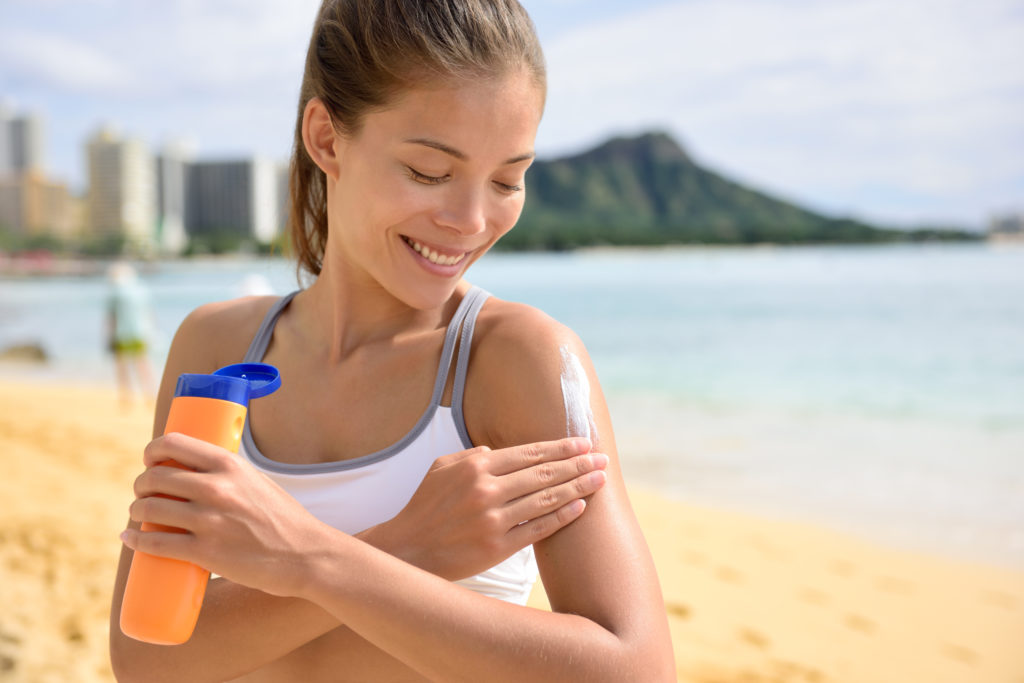
The baby boomer generation was sold a false “bill of goods” about the realities of tanning. Glossy fashion magazines touted the possibility of obtaining a “safe tan”, and advertising agencies offered suntan lotions and oils that promised a “deep, dark, tropical tan”, but offered little — if anything — in the way of SPF protection.
As a result, the “boomers” might be forgiven for developing skin cancers in their later years, but the rest of us have no excuse for exposing ourselves to the sun’s harsh rays simply for the purpose of scoring a bronzed body for the summer! We all should know, by now, that the idea of a “safe tan” is a complete fallacy — and that includes the tan you get from the artificial “sunlight” in a tanning salon!
The hard truth is that exposing your skin to the sun — even on an overcast day, and yes, even in the wintertime — without first slathering on sunscreen, put you at risk for pre-cancerous conditions like actinic keratosis, and all types of skin cancers from the most curable to the most deadly.
Actinic Keratosis: The Precursor to Skin Cancer

No discussion about skin cancer would be complete without the inclusion of pre-cancerous skin lesions known as actinic keratoses (AK). An actinic keratosis (sometimes referred to as a solar keratosis) is a scaly, crusty lesion resulting from exposure to the sun’s damaging UV rays.
You’ll usually see it referred to in its plural form — actinic keratoses — because a person rarely develops just one such lesion. It’s referred to as a pre-cancer because if not treated, it is highly likely that it will develop into a skin cancer, usually basal cell carcinoma and sometimes squamous cell carcinoma.
Actinic keratoses are rough, and can vary in color from whitish to red or brown. They’re often small, typically varying in size from 1/8″ to 1/4″, and sometimes they’re first discovered by touch rather than sight, since they’re rough, like sandpaper. Early treatment can typically eliminate these worrisome lesions before they develop into skin cancers. Your doctor may choose one of several methods to rid your skin of actinic keratoses.
For example, she may use:
- Cryosurgery – a method that employs liquid nitrogen to freeze the lesions, after which they’ll either blister or become crusty, and simply fall off.
- Curettage and Desiccation – a method that involves scraping the lesion(s) and then applying heat or a chemical to stop the bleeding and to kill off any remaining AK cells.
- A laser to vaporize the AK tissue.
What is Skin Cancer?
Skin cancer is the most common form of cancer in the U.S., and will affect one in five of us in our lifetimes! What is skin cancer? Simply put, it’s the uncontrolled growth of cells found in the skin. That said, your skin is made up of different layers, and cancer can affect one or more of these layers. The most common skin cancer affects the lowest level of the epidermis — called the basal layer.
Basal Cell Carcinoma
This is the most common form of skin cancer, accounting for more than 80% of all cases of skin cancer. It’s a slow-growing cancer that rarely spreads to other parts of the body. It usually appears on the surface of the skin as raised, waxy-looking raised bumps.
Squamous Cell Carcinoma
The second most common form of skin cancer, squamous cell carcinoma, affects cells in the middle layer of the epidermis. It’s usually more aggressive than basal cell carcinoma, and appears on the surface of the skin as red, scaly, rough skin lesions somewhat similar in appearance to actinic keratosis (In fact, one is sometimes mistaken for the other). The most common areas affected are those that are rarely covered by clothing, such as the face, scalp, neck, and the backs of the hands.
Melanoma

The rarest, but potentially deadliest form of skin cancer is melanoma. Although it’s not as common as basal cell or squamous cell carcinomas, it’s nonetheless responsible for approximately 75% of all skin cancer related deaths, according to the American Melanoma Foundation.
Melanoma originates in the pigment-creating skin cells and creates moles that follow an ABCDE pattern:
A
for asymmetrical shape.
B
for border irregularities.
C
for color. May appear as an array of colors such as brown, black, tan and blue, sometimes on the same mole. Benign moles are typically one color.
D
for diameter. Does the mole have a larger diameter? Questionable moles may have a diameter of 6+ millimeters or about the size of a pencil eraser.
E
for evolution. How is the mole’s appearance (size and color) evolving? Bring changes to the attention of your physician.
The first step in watching for changes is knowing what is normal for you. Once your doctor or dermatologist has checked your moles and deemed them benign, it’s up to you to take note of each one and do periodic “mole checks”. You can use a hand mirror to check moles in places that aren’t readily visible. A full length mirror is a big help as well.
Prevention

As the saying goes, “An ounce of prevention is equal to a pound of cure.” Truer words were never spoken when it comes to the subject of skin cancer. Start or continue using a minimum SPF 30 broad spectrum sunscreen on all exposed skin on a daily, year-round basis. You’ll need to apply 2 tablespoons, which is roughly the size of a shot glass, to cover your face and body adequately. Reapply as directed on the product’s label.) Also, avoid sun exposure (including tanning booths).
Modern society may see tanned skin as attractive, but it’s definitely not healthy! The Victorians were unwittingly on to something with their parasols and wide-brimmed hats. You may not feel comfortable shielding yourself with a parasol or a hand-held umbrella when it’s not raining, but a wide-brimmed hat and a good pair of UVA/UVB blocking sunglasses are wise investments!
Not only will wearing these items and using sunscreen daily help protect you from skin cancer and sun-related eye problems, they’ll also keep you looking younger longer as an added bonus!



